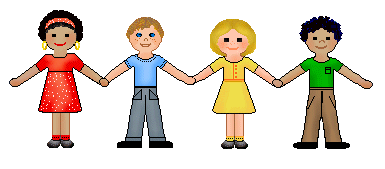As an immigrant to a new land, discovering, establishing, and feeling comfortable with an identity is an important aspect of one's own journey. The settling in process can be difficult based on a number of reasons such as social integration and a desire to feel accepted as an individual who is capable of offering a contribution to society. But what about the children of immigrants who are either born here or arrive at a young age and then strive to settle in to an early childhood environment?
This can be quite a daunting task for tamariki based on culture and language and ever so often it is us as early childhood teachers who play such an important role in helping those children develop a sense of belonging.
As early childhood teachers in New Zealand it is also our responsibility to, "promote te reo and ngā tikanga Māori, making them visible and affirming their value for children from all cultural backgrounds" (Ministry of Education, 1996, p.42). One of the The New Zealand Teachers Council Registered Teacher Criteria and key indicators are:
3. demonstrate commitment to bicultural partnership in Aotearoa New Zealand
i. demonstrate respect for the heritages, languages and cultures of both partners to the Treaty of Waitangi
I have often heard adults discussing the bicultural aspect and refering to it as what I perceive to be a weightage towards promoting te reo Māori in an English speaking environment. I totally respect the resurgence of this language as it does identify with biculturalism and Te Tiriti o Waitangi. From an early childhood perspective I feel that promoting an awareness of the treaty as well as te reo Māori is an essential aspect of our teaching practice at our work place. This is done in practice through waiata and phrases on a daily basis.
As a foundation for finding an identity in this beautiful land I respect the bicultural aspect of Aotearoa. After developing this basic understanding of biculturalism I am also aware that I now live in a multicultural society that I look upon as the second floor built on this foundation.
That's where I draw the line. When I went to University in Auckland I was more or less told to do a mihimihi in a particular format that I had no connection to. Mountain, river, waka? They have nothing to do with my identity. If that's the way anyone wants to introduce themselves I totally respect that as their way. For me, from a bicutural perspective, I choose the Pakeha way of introducing myself.
But what about the tamariki in our early childhood work place? Should we be suggesting that their mountain is Rangitoto or their waka is .. ? In consultation with their Whānau, particularly Māori, most certainly. Other families with a strong sense of identity to this land through generations would also probably want to introduce themselves with a simple mihimihi as their option as well. But an Asian, Indian, or Middle Eastern child may not make that connection to let people know where they are from and prefer to offer their own introduction. I respect that too.
Tēnā koutou, tēnā koutou, tēnā koutou katoa.
References
Te Whāriki. He Whāriki Mātauranga mō ngā Mokopuna o Aotearoa (1996). Early Childhood Curriculum. Learning Media, Wellington.
New Zealand Teachers Council Registered Teacher Criteria.
